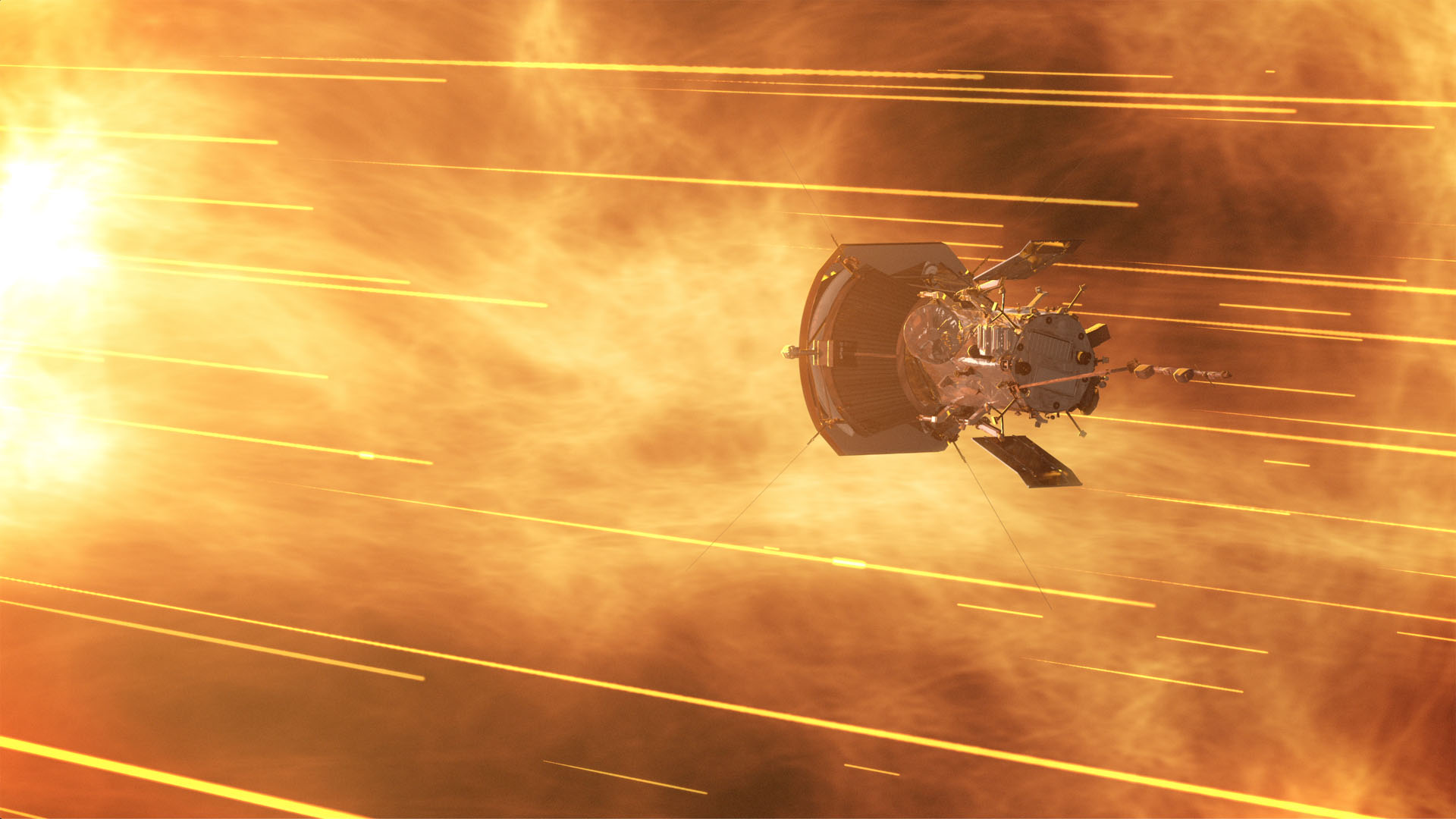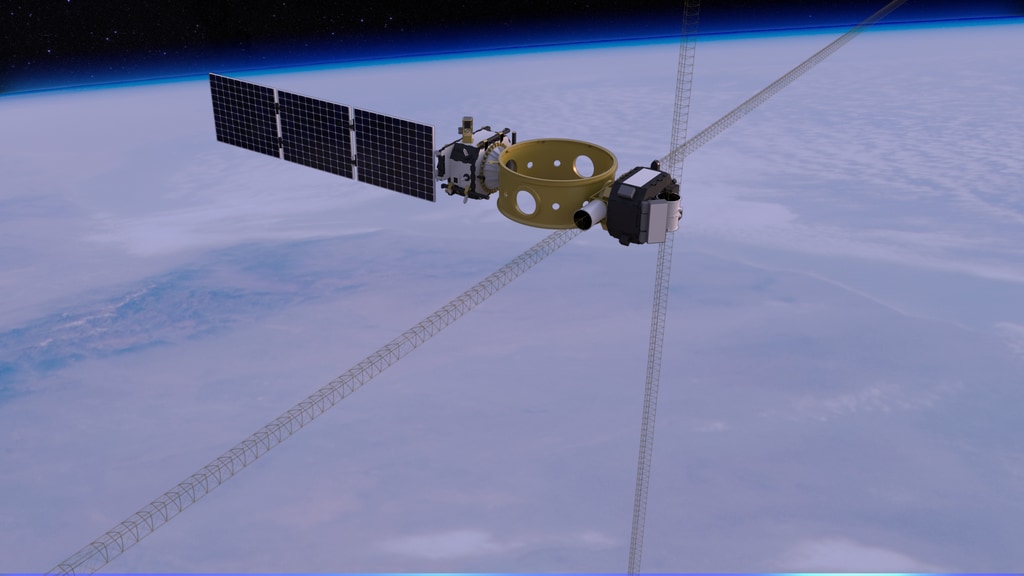NASA Tech on SpaceX Falcon Heavy Launch - Media Telecon Resources
NASA is sending four technology missions that will help improve future spacecraft design and performance into space on the next SpaceX Falcon Heavy rocket launch. Experts will discuss these technologies, and how they complement NASA’s Moon to Mars exploration plans, during a media teleconference Monday, June 10 at 1 p.m. EDT.
Audio of the teleconference will be streamed live online at:
https://www.nasa.gov/live
Participants in the briefing will be:
Jim Reuter, acting associate administrator of NASA’s Space Technology Mission Directorate, will discuss how technology drives exploration to the Moon and beyond.
Jill Seubert, deputy principal investigator for the Deep Space Atomic Clock at NASA’s Jet Propulsion Laboratory, will discuss how to advance exploration in deep space with a miniaturized, ultra-precise, mercury-ion atomic clock that is orders of magnitude more stable than today’s best navigation clocks.
Don Cornwell, director of the Advanced Communications and Navigation Division of NASA’s Space Communications and Navigation program, will discuss how a more stable, space-based atomic clock could benefit future missions to the Moon and Mars.
Christopher McLean, principal investigator for NASA’s Green Propellant Infusion Mission (GPIM) at Ball Aerospace, will discuss the demonstration of a green alternative to conventional chemical propulsion systems for next-generation launch vehicles and spacecraft.
Joe Cassady, executive director for space at Aerojet Rocketdyne, will discuss the five thrusters and propulsion system aboard GPIM.
Nicola Fox, director of the Heliophysics Division of NASA’s Science Mission Directorate, will discuss Space Environment Testbeds and the importance of protecting satellites from space radiation.
Richard Doe, payload program manager for the Enhanced Tandem Beacon Experiment at SRI International, will discuss how a pair of NASA CubeSats will work with six satellites of the National Oceanographic and Atmospheric Administration’s (NOAA’s) COSMIC-2 mission to study disruptions of signals that pass through Earth’s upper atmosphere.
To participate in the teleconference, media must contact Clare Skelly at 202-358-4273 or clare.a.skelly@nasa.gov by 10 a.m. June 10. Media questions may be submitted on Twitter during the teleconference using the hashtag #askNASA.
NASA’s four missions will share a ride on the Falcon Heavy with about 20 satellites from government and research institutions that make up the Department of Defense’s Space Test Program-2 (STP-2) mission. SpaceX and the U.S. Air Force Space and Missile Systems Center, which manages STP-2, are targeting 11:30 p.m. Saturday, June 22, for launch from historic Launch Complex 39A at NASA’s Kennedy Space Center in Florida.
Charged with returning astronauts to the Moon within five years, NASA’s Artemis lunar exploration plans are based on a two-phase approach: the first is focused on speed – landing astronauts on the Moon by 2024 – while the second will establish a sustained human presence on and around the Moon by 2028. We will use what we learn on the Moon to prepare to send astronauts to Mars. The technology missions on this launch will advance a variety of future exploration missions.
For more information about NASA’s Moon to Mars exploration plans, visit:
https://www.nasa.gov/moontomars
For more information about the NASA technologies aboard this launch, visit:
https://www.nasa.gov/spacex
Learn more about NASA’s Deep Space Atomic Clock:
https://www.nasa.gov/mission_pages/tdm/clock/index.html
Learn more about NASA’s Green Propellant Infusion Mission:
https://www.nasa.gov/mission_pages/tdm/green/index.html
SPACE TEST PROGRAM-2
The Department of Defense (DoD) Space Test Program-2 (STP-2) mission, managed by the U.S. Air Force Space and Missile Systems Center, will over 20 satellites to space on the DoD's first ever SpaceX Falcon Heavy rocket.
Credits: U.S. Air Force Space and Missiles Systems Center/SpaceX
Complete transcript available.
DEEP SPACE ATOMIC CLOCK

Technicians integrate NASA's Deep Space Atomic Clock into the Orbital Test Bed satellite, which will launch on a SpaceX Falcon Heavy rocket as part of the Space Test Program-2 mission.
Credits: General Atomics Electromagnetic Systems
NASA has perfected new navigation technology that would make self-driving spacecraft and GPS beyond the Moon a reality. The Deep Space Atomic Clock is the first atomic clock small and stable enough to fly on a spacecraft beyond Earth's orbit. As NASA works to put humans on Mars and the Moon, the clock’s precise timekeeping will be key to these missions’ success. Credit: Credit: NASA/JPL-Caltech/Lisa Poje
GREEN PROPELLANT INFUSION MISSION

Ball Aerospace engineer performs final checks on NASA’s Green Propellant Infusion Mission before the spacecraft shipped to NASA’s Kennedy Space Center in Florida for launch processing.
Credits: Ball Aerospace
Ball Aerospace engineer performs final checks on NASA’s Green Propellant Infusion Mission before the spacecraft shipped to NASA’s Kennedy Space Center in Florida for launch processing.
Credits: Ball Aerospace
Illustration of the Green Propellant Infusion Mission before and after deployment in space.
Credits: NASA
SET
Animation showing SET onboard the DSX spacecraft. Credit: NASA Goddard/CIL
E-TBEx
Animation depicting fluctuations in the ionosphere due to space weather and terrestrial weather. Such changes in this level of the upper atmosphere can block signal transmission. Credit: NASA Goddard/CIL/Brian Monroe

Bubble in the Earth's ionosphere is shown with color-coding of the it's ability to distort radio signals (red high, blue low). The overhead beacon satellite produces a "pure" radio signal that is distorted when passing through the bubble. Phase and amplitude distortions along many such signal paths allow researchers to reconstruct the bubble's interior size, shape, and density. Bubbles like this example often grow out of the wavy bottom of the ionosphere as shown along the white/blue border. Radar data courtesy of SRI
University of Michigan students test the deployment of a CubeSat's solar panels and antennas for the E-TBEx mission. Credit: University of Michigan/Michigan Exploration Lab
Credits
Please give credit for this item to:
NASA's Goddard Space Flight Center
-
Producer
- Genna Duberstein (USRA)
-
Technical support
- Aaron E. Lepsch (ADNET Systems, Inc.)
-
Scientist
- Nicola Fox (NASA)
-
Engineer
- Richard Doe (SRI)
-
Payload program manager
- Richard Doe (SRI)
Release date
This page was originally published on Monday, June 10, 2019.
This page was last updated on Wednesday, May 3, 2023 at 1:45 PM EDT.

